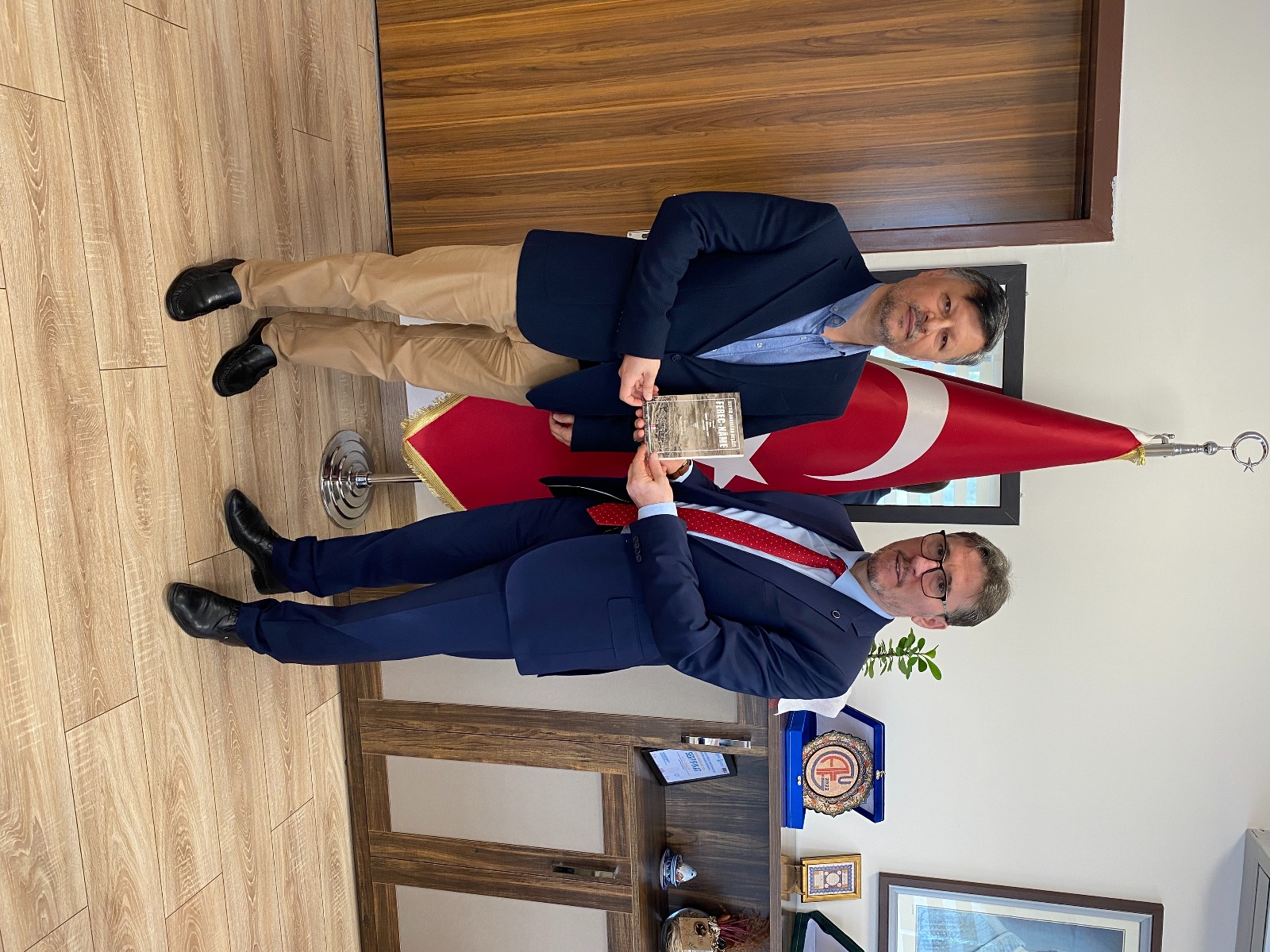Assist. Prof. Dr.Zafer TOPAK presented his work titled Seyyid Abdullah Neşâtî Ferec-Nâme to the Dean of the Faculty of Letters Prof. Dr. Muhittin Kapanşahin. Our Dean Prof. Dr. Muhittin Kapanşahin congratulated Turkish Language and Literature Assist. Prof. Dr. Zafer TOPAK for his work and thanked him.

Seyyid Abdullah Neşâtî Feraj-Nâme is a small but important masnavi written by Seyyid Abdullah Neşâtî (1704-1774 AD), an important representative of the famous family known as ‘Âl-i Fahrî’ or ‘Fahrî-zâde’, who made important contributions to the history of science, culture and literature of Mosul and Baghdad. Neşâtî was appointed as divanü'l-inşâ of the provincial administration with interest and favour by Ahmed Pasha (1723-1747), the son of Eyüplü Hasan Pasha (1704-1723), the governor of Baghdad, and continued in this position under the other Baghdad governors Süleyman Pasha (1749-1762), Ali Pasha (1762-1764) and Ömer Pasha (1764-1775). The author, who was also the father of Baghdadli Es'ad and Ali Behcet Efendi, one of the representatives of the classical Turkish poetry of the 18th century, was an important statesman and a scholar who wrote important scientific works such as Sevânihü'l Karîha fî Şerhi's-Safîha, Tesrîhü'l-İdrâk fî Şerh-i Teşrîhi'l-Eflâk, Şerhu Hulâsati'l-Hisâb, Şerhu Kasîdeti'l-Bürde. Neşâtî, who witnessed especially the establishment and the first years of the 80-year period known as the ‘period of slave governors’ in Ottoman history, starting with the first slave governor Süleyman Pasha, nicknamed ‘Abu Leylâ’ in 1749 and lasting until the dismissal of the last slave governor Davut Pasha from the governorship in 1831, narrated very important political and historical events that took place during the governorships of Ahmet Pasha and Süleyman Pasha, such as the siege of Baghdad by Nadir Shah, the Shah of Iran. He narrated very important political and historical events in his work Feraj-nâme and included his observations, thoughts and determinations about these critical events. It is our greatest hope that this study, which aims to introduce and evaluate Neşâtî and his valuable work Feraj-nâme, especially in terms of the history of Baghdad, about which there is not much information in Ottoman sources, will make a small contribution to our history of culture and civilisation.
